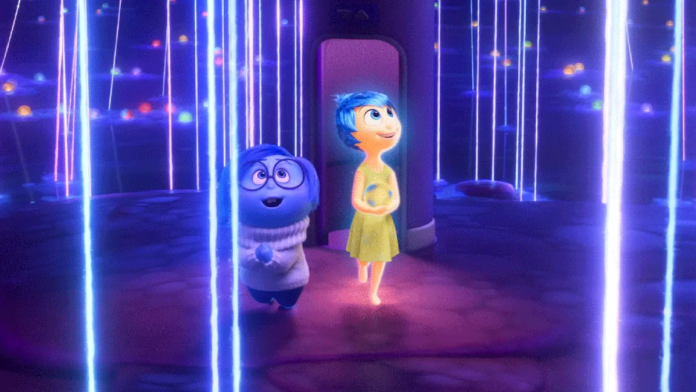By Sophia Byl
With the original Inside Out (2015) having earned nearly 100 awards, including an Oscar for Best Animated Feature Film in 2016, the sequel certainly had big shoes to fill. Those that had been so captivated by Riley’s emotional rollercoaster of a move and her five unique Emotions waited patiently, and even created trailers for a fanmade sequel, until nine long years later, Inside Out 2 was finally released on June 14th, 2024. This time, Riley is entering her freshman year in high school, and desperately wants to be seen as cool by the members of the school’s varsity hockey team, the Firehawks. Complicating this process is, of course, puberty, and four new Emotions – Anxiety, Envy, Ennui, and Embarrassment – that the original five are less than ecstatic to meet.
I was looking forward to seeing Inside Out 2 not only because it was a continuation of one of my favorite movies from elementary school, but because I was curious to see how Pixar was going to handle the touchy subject of teen mental health, especially Anxiety. Being the first new Emotion that was revealed in the teaser trailers, it was clear that Anxiety was going to be a major influence on the state of Riley’s mind throughout the film. What I wasn’t expecting was for Anxiety and the other three new Emotions to completely kick Joy, Sadness, Anger, Fear, and Disgust out of Headquarters in order to fulfill Anxiety’s plan for “a new Riley”.
The first Inside Out didn’t really have a clear antagonist, but in the sequel Anxiety proves to be a supremely well-written morally grey type of character. She genuinely believes that she is helping Riley by setting unrealistic expectations and putting incredible pressure on her to overperform at hockey, but as her methods slowly become less and less ethical, we watch Riley’s mindscape crumble under Anxiety’s controlling rule. This type of ethically ambiguous antagonist is a concept that fits Anxiety very well, since the emotion can feel like it is trying to help you be productive or satisfied when in reality it’s destroying you from the inside out.
Despite Anxiety’s character being very well-fleshed out, I found her three sidekick Emotions falling a bit short of my hopes throughout the movie, specifically Envy. For such a cute design and interesting concept, Envy really only serves to hype up Anxiety’s plans and act generally envious of other peoples’ possessions and achievements. Ayo Edebiri really captures Envy’s enthusiasm and desperation through her voice acting, and the character’s lack of screen time and depth left me feeling slightly unsatisfied. Ennui and Embarrassment are given a similar treatment, with each of them only having a couple star character moments before returning to the background.
Also lurking in the background is the movie’s magical soundtrack, this time around having been composed by Andrea Datzman and conducted by Marshall Bowen. The original Inside Out’s score had been arranged by legendary Pixar composer Michael Giaccino (who had previously composed the wonderful soundtracks of Ratatouille, The Incredibles, and Coco), and while I was a little sad to see his pieces weren’t making a return in the sequel, I was pleasantly surprised when Inside Out 2 opened to a reprise of the first movie’s classic theme “Bundle of Joy”.
Overall, I was extremely pleased that Pixar was willing to go to the lengths they did to emphasize the importance of mental health for today’s youth. Inside Out 2 was one of many films in the past couple years to depict a character having an anxiety attack, and while some showed a very distorted version of this event, Inside Out 2 displays it in a realistic yet jarring fashion. Lisa Damour, a clinical psychologist and consultant for Inside Out 2, explained in an interview with NPR that the panic attack was properly depicted as “an overwhelming experience that causes Riley to hyperventilate and disconnect from herself and the outside world,” and that the movie as a whole was “surprisingly accurate when it comes to explaining anxiety and puberty.” Hopefully with the release of this charming film that brings attention to real issues, more parents and children will be willing to have important conversations about mental health and wellbeing.

